Why your company needs to invest in a “brand hero”?
We live in a hurry. We don’t have time to thoroughly compare offers. Emotions, details, temporary availability, sometimes coincidence, determine the purchase. Not necessarily the physical characteristics of the product.
Ways of communicating are constantly changing, consumers are rapidly becoming bored and brand managers are racing with ideas on how to strengthen relationships with suppliers, build a positive brand image, win the hearts of customers and ensure the company’s profit. The brand hero (brand hero), as an emotional addition to the brand, therefore seems an excellent strategy to complement all the company’s external communication, as well as the internal one – i.e. aimed at employees. In this article, I describe when it is worth investing in a mascot and how to approach it to increase our chances that the investment will be a spectacular success.
I call a brand hero any character that is ‘alive’. He or she can be an object, but at least visually animated. This means that it should have eyes, a mouth, arms and legs – for example, like Reddy Kilowatt (born 1926), who functioned as a corporate spokesperson for electricity generation in the United States for more than seventy years).
If a character is linked to a product (attribute, values and physicality), it generally begins to play an important role in advertising campaigns from the moment it is first used. And through frequent exposure, it becomes liked. If conducted well, it starts to exist independently of the product (and its brand) and enters our homes in the form of a cuddly toy, on ecological bags in the form of a pin or in the kitchen as a magnet hung on the fridge door.
Who among us does not associate Uncle Sam (created by the US government in 1838), who started the trend for visual personification of brands? This grey-haired and elderly, relatively unfeeling man (supposedly a caricature of Abraham Lincoln) ‘lives’ to this day. The most famous representation of Uncle Sam comes from the “I wan’t you!” recruitment poster. Currently, we can see him in this form in memes, motivational ads or social campaigns. To this day, Uncle Sam, by looking into the eyes and pointing his finger at the reader, in a low-key and demanding manner, can effectively encourage certain activities.
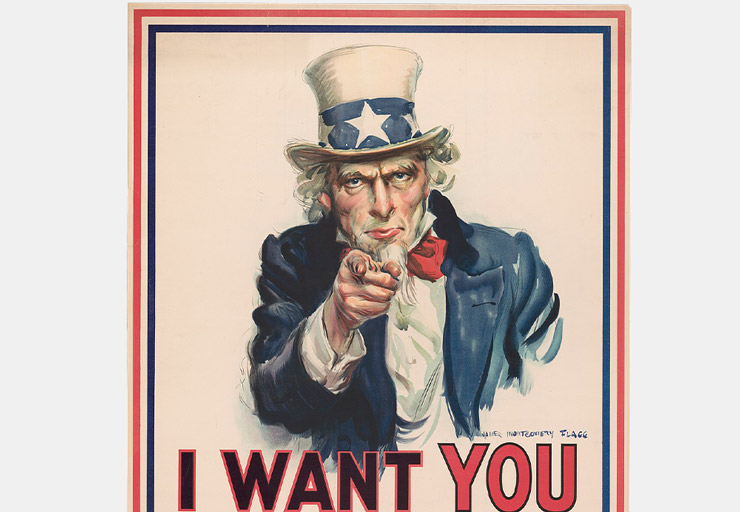
The brand hero made his way onto commercial brand packaging with Aunt Jemina, and it was a box of pancake mix and syrup. Commonly cited as the oldest, over 120 years old, Bibendum, Michelin’s chubby but dynamic human, is among the fastest recognisable brand heroes in the world. It is an example of a model type of brand hero – based on the physical characteristics of the product – as the Michelin Man is made of… tyres! At the same time, the design has always remained up-to-date: the character has undergone many metamorphoses, adapting to evolving consumer tastes.
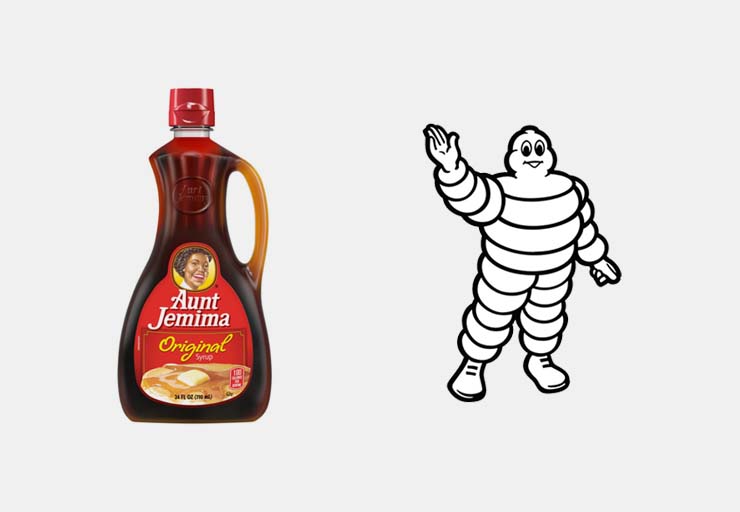
Another example of a brand that has created its characters by looking primarily at the physicality of the product is the duo of M&M’s. The brand’s protagonists were made into two sweets – Yellow with a peanut inside and Red, which melts in the mouth rather than in the hand. The protagonists are paired on the basis of contrast – the more polite Yellow and the combative, ironic Red, go through many adventures always in a similar pattern – we sympathise a little with the gullible Yellow, at the same time Red’s cutting retorts bring a smile to our faces.
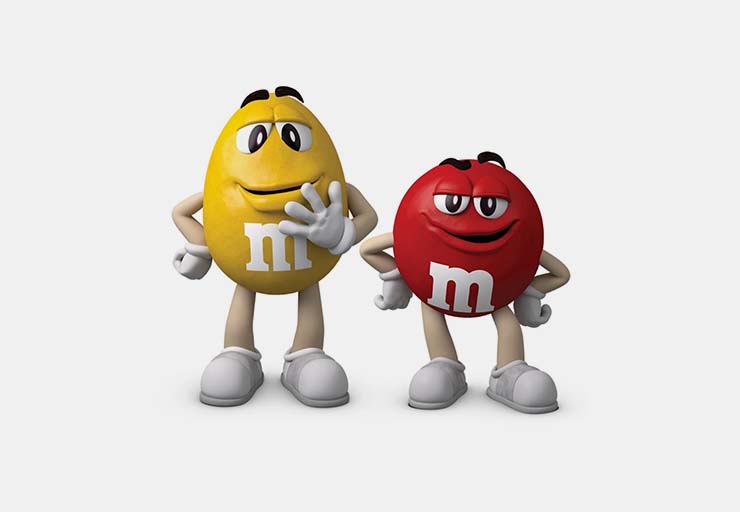
The scheme of building a brand hero on appearance, shape and colour is the right one and the fastest leading to success, at the same time by far the most difficult. Take Delma margarine, for example. Pretty, isn’t it? It is impossible to associate it with any other product.
An alternative technique for constructing a character is to draw on brand attributes or refer to brand values. Here, examples can be multiplied – a red Santa Claus as red as a Coca-Cola can is, Quicky (Nesquik’s bunny), who is as fast as you make your cocoa, or Mikey Mouse (Mickey Mouse) as the flagship character among fairy tale characters and an example of the illustrative style of the Walt Disney label.
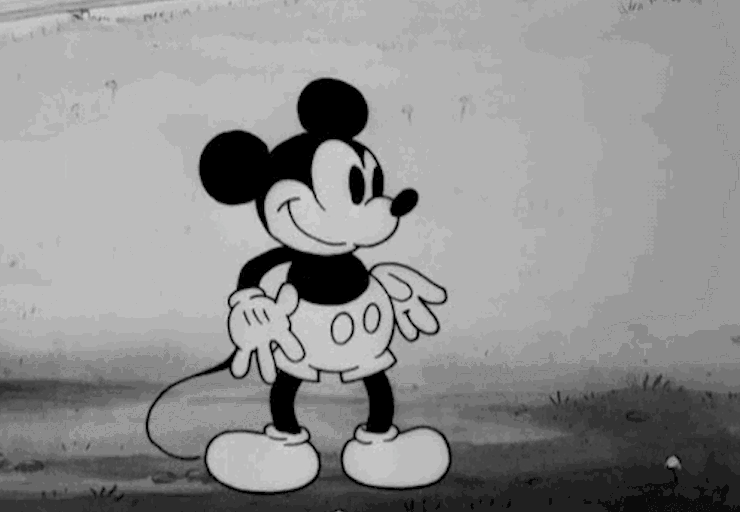
A brand hero is a tool that effectively and impressively builds brand image. If I asked you now to quote the order of the colours of the letters used in the Google logo, I am sure you would not list them in the correct order. And you probably see this logo every day, many times a day. We supposedly remember the logo, but the human brain is designed in such a way that it does not register such details.
What is different with animated brand mascots. If they have eyes, mouths, legs and arms, we will certainly remember them better than any graphic sign, even the most beautiful one. We recall corporate characters as quickly as the face of a best friend. Building such recognition, relationships and reach undoubtedly requires determination, time and money. However, it yields incredible results.
Czy rzeczywiście warto?
Yes, if… you have a creative idea and are prepared to work systematically.
The difficulty of differentiating a brand is, has been and arguably will continue to be one of marketing’s most significant challenges. In a situation where the brand character is generic, bland and altogether disconnected from the product, more money will be needed to promote it. This is not impossible, however, it is much more beneficial to link the character to the day-to-day marketing activities of the brand manager, as we have done together with the Polish Foundation Słonie na Balkonie.
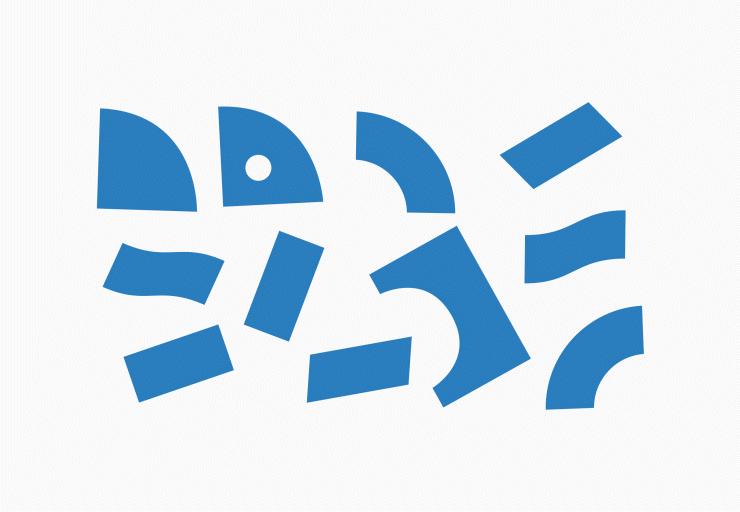
Brand Hero stems from the brand name and is an elephant. He is a particular metaphor for what the foundation does – putting together a child’s life after trauma into a new quality, piece by piece. The elephant also serves a gamification function, as we have built it out of twelve blocks. The aim of the foundation is to seek donors willing to set up a monthly transfer of a fixed amount to the foundation’s account. Regular income allows the Foundation to plan therapy for its wards, and all brand communication is built around the elephant character.
Yes, if… you understand that it’s a relationship-building tool – not a sales tool.
If we use our mascot to promote, sell or praise a product offering, we may find that instead of positive emotions and smiles, we create suspicion and even dislike of the brand among consumers. And the one thing that should be avoided in brand hero management is creating situations that can generate negative associations with the character. If we decide to use a brand hero to present our product – do it in a non-literal way.
It is useful to dress up the whole message with a straightforward, cheerful message. Just as it does Sir CASTLOCK, The protagonist of a company that advises, sells and installs doors, windows and gates. The role of the direct, always ready to advise knight is to attract the customer’s attention, to become memorable and to create warm, positive associations with the brand. With Sir Castlock, everyone feels safe.
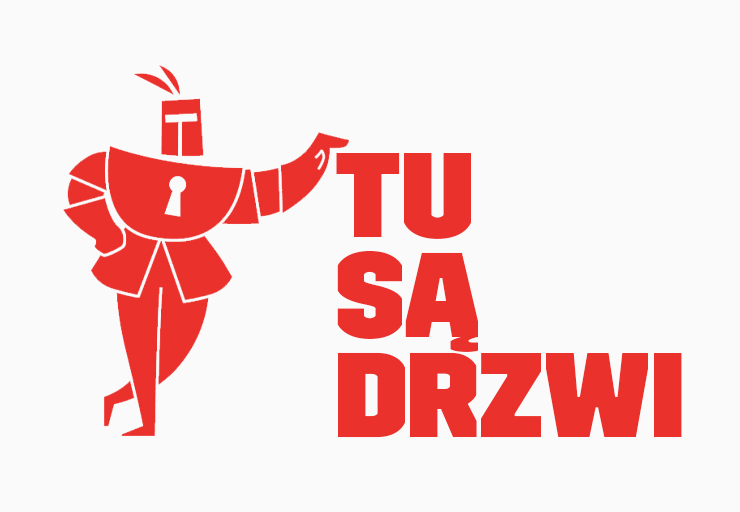
Therefore, it is worth bearing in mind that sales should not be the core of brand character management – it is definitely a brand building element. The clue of the whole endeavour is to shorten the distance between the brand and the customer. By communicating with humour, the brand loses its anonymity and engages the audience emotionally. It shifts the weight from the question “Which offer should I choose?” to a consideration of “Do I like this character?”.
Yes, if… the brand needs to support or complement the communication.
Companies with technical products behind them, expressed in numbers, purchased incidentally usually do not transport customers into a world of unreal stories. Particularly b2b brands and those built on the split corporation model, due to the scale of operations, the great responsibility, cannot afford to take the subject too lightly. And yet sometimes a brand gestor feels like doing more than presenting mechanical data. After all, the customer is also human and, whether we want it or not, is guided by emotions in the purchasing decision process.
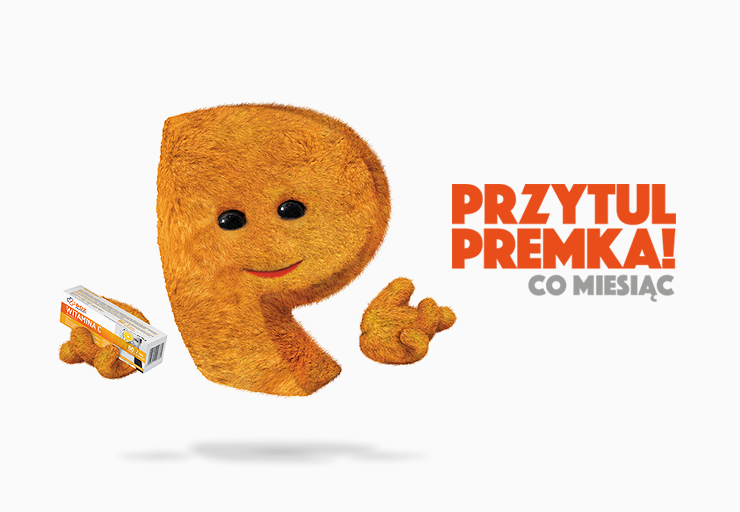
Also communication comparing available solutions or educational communication can be supported by a brand hero. Another character of ours who explains difficult things in an accessible way and overcomes certain obstacles himself is Premek (which sounds a bit like Przemek, the name of a colleague from work). It was used in the internal communication of the DOZ pharmacy chain. The fluffy ‘P’ supports pharmacists in serving the chain’s customers according to certain procedures and offers to award them bonuses for exemplary work. Who wouldn’t want to hug a bonus… i.e. Premka?
Brand Hero as part of the ‘human face’ of the company.
A hero can really work wonders, however, he is only a tool and, like any tool, has his limitations. Not every situation will be appropriate to give him a voice or even to use his image on a given occasion. The brand hero can be regarded as a ‘representative’ of the brand – on a par with the press officer, PR specialist or CEO, whose daily presence on social media no longer comes as a surprise.
The brand hero has the ability to defuse the atmosphere like no one else. Although he or she is not a salesperson he or she can build a relationship with the audience. And he can make fun of himself. And probably nothing builds an atmosphere of trust as much as a healthy distance from one’s mistakes, which is not always befitting of high-profile company employees. And even if, from time to time, our brand hero makes an ambiguous joke or is tempted to make an ironic but apt allusion, he will definitely be forgiven more quickly.